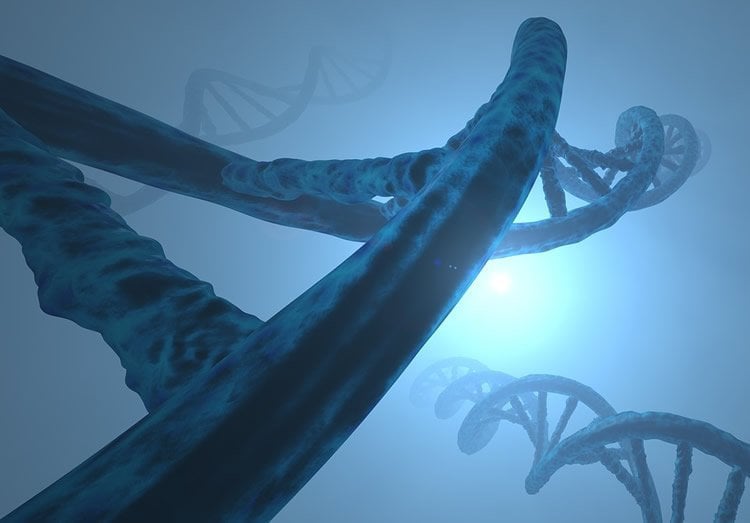Summary: A new USC study reports researchers have discovered 150 proteins that affect brain development and cell activity, contributing to the development of mental health disorders.
Source: USC.
A USC research team identified 150 proteins affecting cell activity and brain development that contribute to mental disorders, including schizophrenia, bipolar condition and depression.
It’s the first time these molecules, which are associated with the disrupted-in-schizophrenia 1 (DISC1) protein linked to mental disorders, have been identified. The scientists developed new tools involving stem cells to determine chemical reactions the proteins use to influence cell functions and nerve growth in people.
“This moves science closer to opportunities for treatment for serious mental illness,” said Marcelo P. Coba, the study author and professor of psychiatry at the Zilkha Neurogenetic Institute at the Keck School of Medicine of USC.
The findings appear in Biological Psychiatry.
Schizophrenia affects less than 1 percent of the U.S. population, but has an outsized impact on disability, suicide and premature deaths.
The DISC1 gene was linked to schizophrenia nearly 20 years ago. It controls how nerve cells called neurons develop, as well as how the brain matures. DISC1 also directs a network of signals across cells that can contribute to the disease. Scientists say errors in these chemical reactions contribute to schizophrenia.
But the identity of proteins that DISC1 can regulate is poorly understood, prompting the USC researchers and colleagues from the State University of New York Downstate Medical Center to undertake the research. The challenge was to simulate conditions inside the human brain, Coba explained.
Using stem cells, they conducted assays resembling habitat where DISC1 does its work. Then, they used gene editing to insert a molecular tag on DISC1, allowing them to extract it from brain cells and identify the proteins with which it associates.
Identifying the proteins that interact with DISC1 in brain cells could lead to understanding how the risk factors for psychiatric diseases are connected to specific molecular functions, Coba explained. The discovery enables researchers to determine specific processes that differ in patients suffering from specific mental illnesses.
“This gives researchers specific trails to follow within cells from both healthy patients and those diagnosed with disorders,” Coba said.

Schizophrenia is one of the top 15 leading causes of disability worldwide. People with schizophrenia live an average of nearly 29 years less than those without the disorder, according to the National Institutes of Mental Health (NIMH).
The illness is often accompanied by conditions such as heart disease and diabetes, which contribute to the high premature mortality rate among people with schizophrenia. About 5 percent of people with schizophrenia die by suicide, a rate far greater than the general population, with the highest risk in the early stages of illness, according to the NIMH.
Authors of the study include Brent Wilkinson of the Zilkha Neurogenetic Institute, Keck School of Medicine; Oleg Evgrafov and James Knowles of the Department of Cell Biology, SUNY Downstate Medical Center; DongQing Zheng, Nicolas Hartel and Nicholas A. Graham of the Mork Family Department of Chemical Engineering and Materials at USC; Justin Ichida of the Department of Stem Cell Biology and Regenerative Medicine at the Keck School of Medicine and the Eli and Edythe Broad CIRM Center for Regenerative Medicine and Stem Cell Research at USC; and Coba of the Zilkha Neurogenetic Institute and Department of Psychiatry and Behavioral Sciences, Keck School of Medicine.
Funding: The work was supported by the National Institute of Child Health and Human Development (MH104603-01A1). Ichida is a New York Stem Cell Foundation-Robertson Investigator and co-founder of Acurastem Inc., a Monrovia, California-based company based that creates precision medicine for the treatment of amyotrophic lateral sclerosis.
Source: Gary Polakovic – USC
Publisher: Organized by NeuroscienceNews.com.
Image Source: NeuroscienceNews.com image is in the public domain.
Original Research: Abstract for “Endogenous Cell Type-Specific DISC1 Interactomes Reveal Protein Networks Associated to Neurodevelopmental Disorders” by Brent Wilkinson, Oleg Evgrafov, DongQing Zheng, Nicolas Hartel, James A. Knowles, Nicholas A. Graham, Justin Ichida, and Marcelo P. Coba in Biological Psychiatry. Published May 23 2018
doi:10.1016/j.biopsych.2018.05.009
[cbtabs][cbtab title=”MLA”]USC “Role Schizophrenia Genes Play in Brain Development Discovered.” NeuroscienceNews. NeuroscienceNews, 8 June 2018.
<https://neurosciencenews.com/brain-development-schizophrenia-genes-9290/>.[/cbtab][cbtab title=”APA”]USC (2018, June 8). Role Schizophrenia Genes Play in Brain Development Discovered. NeuroscienceNews. Retrieved June 8, 2018 from https://neurosciencenews.com/brain-development-schizophrenia-genes-9290/[/cbtab][cbtab title=”Chicago”]USC “Role Schizophrenia Genes Play in Brain Development Discovered.” https://neurosciencenews.com/brain-development-schizophrenia-genes-9290/ (accessed June 8, 2018).[/cbtab][/cbtabs]
Abstract
Endogenous Cell Type-Specific DISC1 Interactomes Reveal Protein Networks Associated to Neurodevelopmental Disorders
Background
Disrupted in schizophrenia 1 (DISC1) has been implicated in a number of psychiatric diseases along with neurodevelopmental phenotypes such as the proliferation and differentiation of neural progenitor cells. While there has been significant effort directed towards understanding the function of DISC1 through the determination of its protein-protein interactions within an in-vitro setting, endogenous interactions involving DISC1 within a cell-type specific setting relevant to neural development remain unclear.
Methods
Using CRISPR/Cas9 genome engineering technology, we inserted an endogenous 3X-FLAG tag at the C-terminus of the canonical DISC1 gene in human induced pluripotent stem cells. We further differentiated these cells and used affinity purification in order to determine protein-protein interactions involving DISC1 in iPSC-derived neural progenitor cells and astrocytes.
Results
We were able to determine 150 novel cell-type specific proteins present in DISC1 endogenous interactomes. The DISC1 interactomes can be clustered into several sub-complexes that suggest novel DISC1 cell-specific functions. In addition, the DISC1 interactome in iPSC-derived neural progenitor cells associates in a connected network containing proteins found to harbor de-novo mutations in patients affected by schizophrenia and contains a subset of novel interactions that are known to harbor syndromic mutations in neurodevelopmental disorders.
Conclusions
Endogenous DISC1 interactomes within iPSC-derived human neural progenitor cells and astrocytes are able to provide context to DISC1 function in a cell-type specific setting relevant to neural development and enables the integration of psychiatric disease risk factors within a set of defined molecular functions.






